Already rampant in dozens of states, chronic wasting disease has become a priority for wildlife managers here
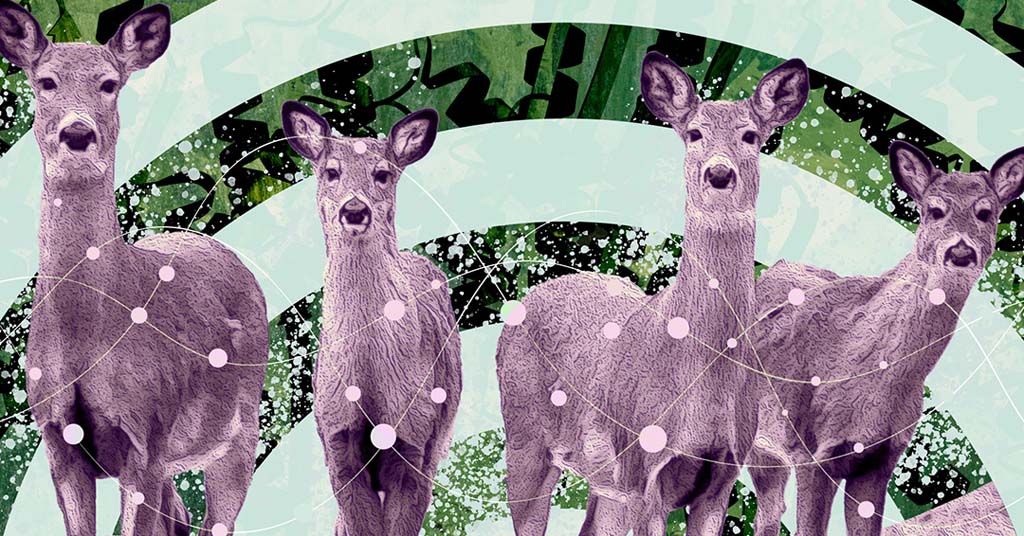
High alert: A prion sickness that’s spread through North America’s deer and elk populations has sent regional game officials into action. Photo illustration: Lisa Modica/Knowable Magazine
By K.C. Mehaffey. May 15, 2025. In February 2023, the Idaho Department of Fish and Game held a removal hunt in the Slate Creek area north of Riggins, near Hells Canyon and the Oregon border. State and federal agents and local landowners baited animals and hunted night and day for weeks, ultimately killing 546 deer and nine elk.
Of the animals killed, 27 tested positive for chronic wasting disease, including 24 white-tailed deer and three mule deer.
It was a difficult management decision, but the right one, the agency says.
“Although a 5% positivity rate may seem low, managers learned from other CWD positive states that 5% is the threshold where population declines/effects start to occur. The rate of spread outside of a known CWD area increases significantly when a 5% CWD positivity is reached,” according to an IDFG news release with results of the special hunt.
It was just one of several special hunts held in Idaho—most of them relying on hunters and landowners—since CWD was first detected in the state in 2021.
Whether to hold similar hunts to either determine prevalence of the disease or to reduce the size of deer, elk or moose herds is a decision that wildlife managers in Washington and Oregon may soon face, as chronic wasting disease continues to spread across the West.
When Washington adopted a CWD Management Plan in December 2021, the disease had been detected in 25 states. Less than four years later, it’s found in 36 states, along with four Canadian provinces.
Last year, California and Washington each detected their first cases of CWD.
Oregon has been spared, but is now surrounded by states with the disease. Ashley Reeder, CWD coordinator for the Oregon Department of Fish and Wildlife, says given what they know about chronic wasting disease, her agency is moving forward under the assumption it will eventually make it to the Beaver State.
“Always fatal”
According to the Centers for Disease Control, CWD has never been reported in people, and it’s not known if people can be infected with it. However, the agency advises against eating meat of an animal with CWD as the disease poses a “theoretical” risk to people.
But for members of the deer family, it’s always fatal, it’s highly contagious and there are no vaccines or cures.
That means it can devastate deer, elk and moose herds.

Distribution of chronic wasting disease as of April 2025. Map: USGS
Compared to other diseases that affect the cervid family, “I would say it’s pretty widely believed that this is kind of the big one,” Hunter Westacott, CWD surveillance coordinator for the Washington Department of Fish and Wildlife, tells Columbia Insight. “There are absolutely places throughout Canada and the United States where they had robust populations [of deer or elk] and they’re seeing those populations decline. And CWD can have an impact on age structures of a population as well,” with fewer animals surviving into old age.
Like mad cow disease, CWD is caused by a prion—a type of protein that can change shape and affect the nervous system, eventually damaging the brain.
It spreads between animals through saliva, blood, urine and feces. Animals are also infected by contaminated soil, food or water.
“If you get it, it’s exceedingly difficult to get rid of it because of it being in the environment” where it persists for years, says Westacott.
To make managing for it even more difficult: It takes 18 months to two years for symptoms of CWD to become noticeable.
“You can only really test an animal reliably post-mortem, so once we’re aware an animal has it, we’re already essentially two years behind the eight ball. And during that one-and-a-half-to-two-year incubation period, under normal deer activities, they’re shedding these infectious prions and coming into contact with other deer,” says Westacott.
Idaho fights spread
In order to get ahead of that two-year curve, Idaho started testing for chronic wasting disease in 2002 as part of a national effort to detect where the disease was already affecting herds.
Hunters were asked to voluntarily test their harvested deer, elk or moose each year.
“We knew CWD had been in some of our neighboring states for decades, and that big game animals frequently cross state lines,” Brian Pearson, communications manager for IDFG’s Southwest Region, tells Columbia Insight.
He says CWD also makes its way to new areas on the carcasses of infected animals, so testing was not limited to places close to the state border.
Hunts to reduce CWD in animal populations aren’t especially popular, even among hunters.
In November 2021—nearly two decades after surveillance began—the agency came up with its first positive result north of Riggins, thanks to the voluntary testing.
The next year, IDFG sampled 3,171 deer, elk and moose statewide, and all 15 cases detected were within a six-mile radius of the first case in the Slate Creek area.
Voluntary testing continued but became mandatory for hunters who bagged an animal in and around Slate Creek.
In the last two years, CWD was identified in two other hunting units. One of the units has produced no more positive results, and a surveillance hunt in the Panhandle Region last year resulted in just six more cases—a prevalence rate of less than 1%, Pearson says.
The “hot spot” continues to be in and around Slate Creek, where initial prevalence was estimated at 7.7%.
To date, a total of 100 wild animals have tested positive in Idaho—81 white-tailed deer, 15 mule deer and four elk.
Two domestic elk that had been imported from outside the state tested positive last winter.
Now that it’s in the state, Idaho is working to prevent CWD from becoming widespread.
Hunters must follow specific rules after harvesting a deer, elk or moose in the areas where CWD has been detected. Whole carcasses of hunted animals cannot be taken out of the zone. Certain parts—like the animal’s spine and head—must be left in the field and reported to IDFG. The animal’s lymph nodes or head can also be left in the field or dropped off at designated locations.
There’s also mandatory testing for hunters taking cervids in and around hunting units where CWD has been detected. Meanwhile, the agency requests hunters to provide samples of the animals they take in other units.
“We know we can’t eliminate CWD in Idaho or completely contain it,” says Pearson. “It’s a matter of continuing to test, learn, and keep hunters informed and engaged to help manage it as effectively as possible.”
Hunting down a disease
So, what prompts a state agency to kill off so many of the animals they’ve worked so hard to preserve?
Pearson notes that the extra hunting seasons allow his agency to gather information that will help them make decisions based on how prevalent the disease is in a given area.
A study published in January by the U.S. Geological Survey and the Wyoming Game and Fish Department notes hunting might reduce the number of infected animals within a population and slow down the spread of a disease.
“However, hunting-based strategies are not always effective and can be controversial,” says a news release on the study.
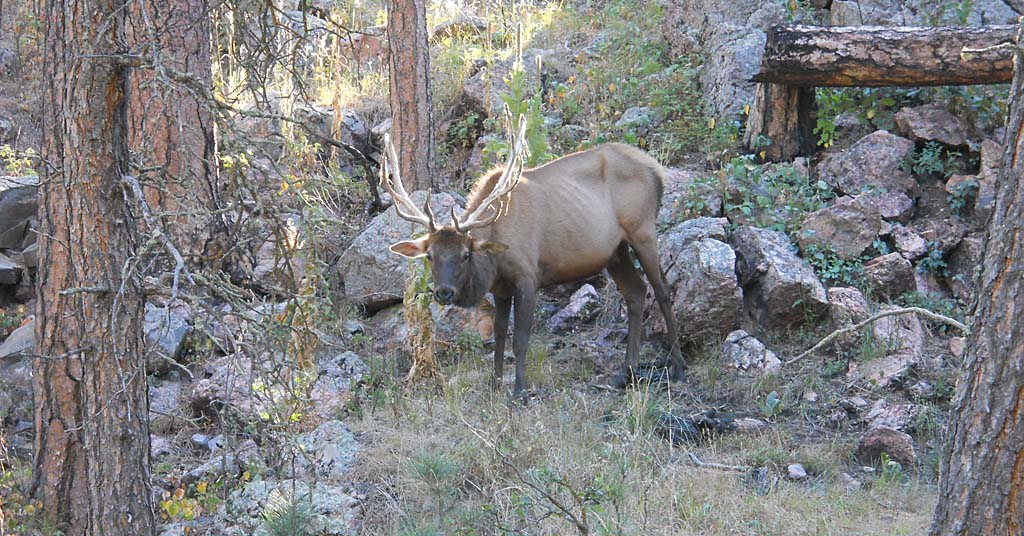
Warning signs: A bull elk with chronic wasting disease. The emaciated appearance and drooping ears are characteristic of latter stages of CWD infection. Photo: Glen Sergeant/NPS
To check the use of hunting as a tool, the study examined CWD trends in 10 mule deer herds across central and eastern Wyoming, using 20 years of data gathered by the Wyoming Game and Fish Department.
“We found that harvesting a high proportion of the adult males in the herd—around 40% every year for 20 years, is expected to keep chronic wasting disease infections at low numbers,” Wynne Moss, lead author and USGS scientist, said in the release.
That level of hunting reduces the infected population of bucks to less than 5%, but if only 20% of the bucks are harvested each year, the prevalence rises to about 30%.
Pearson says IDFG has used added hunting in the state’s only hot spot to both reduce the herd size and to determine prevalence. In the two other areas, hunting was used to gather information so IDFG can make informed management decisions based on estimated prevalence.
But these hunts aren’t especially popular, even with hunters, he says.
“Some hunters are very concerned and cooperative, others more dismissive of CWD and/or skeptical,” says Pearson.
In general, he says, they are worried about the short-term and long-term implications of the special hunts, and typically don’t want to see a significant reduction in herds to manage for CWD.
Hunters in Idaho are at least aware of the disease, and compliance with regulations to slow its spread is fairly good, says Pearson.
In Washington, Westacott says holding a special hunt is “definitely a management option that we would consider.”
So far, the agency has given out a couple of special tags to landowners in the greater Spokane area near Fairwood, which had four of the five positive detections from testing after last year’s hunting season. A fifth detection came from a deer taken in Pend Oreille County near Cusick.
Right now, he says, the agency is working on getting the word out about new regulations to reduce spread of the disease.
Washington, Oregon
Westacott and Reeder—his counterpart in Oregon—agree that public education is the biggest challenge for their states, especially since Washington just got its first few cases last fall and it hasn’t appeared yet in Oregon.
“Talk to anyone in any state and they probably would agree public education and outreach, and getting people to understand the nuances of this very unusual disease—and care—is sometimes very difficult,” says Westacott. “And the most difficult part of managing this is getting people to understand and to follow some of those rules and regulations, especially around transportation (of carcasses).”
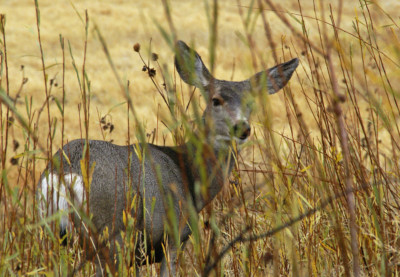
Oregon deer, unaffected. For now. Photo: Jurgen Hess
After detecting CWD during last year’s hunting season, WDFW Director Kelly Susewind initiated emergency rules and later approved several staff-proposed rules as permanent, including new regulations about transporting deer, elk or moose within the state; a ban on importing meat or using scent lures derived from cervid urine and other glandular materials; and a statewide ban on feeding or baiting the animals.
Testing of hunted or road-killed deer and elk is also mandatory in any region where CWD has been detected—currently only Washington’s Eastern Region, the largest of WDFW’s six management regions.
But Westacott says the state also needs to step up testing in other parts of the state, since transmission not only happens when infected animals cross the state border, but also when Washingtonians hunt in other states and bring the disease home.
Because the main focus has been in the Eastern Region, the state is “still fairly in the dark” about potential infections in the rest of the state, he says.
Oregon has stepped up its regulations in the past few years and adopted widespread testing.
“As a state agency, we try to make it convenient to get tested,” says Reeder. “If you make an appointment at an [ODFW] office, you come here and it takes five to 10 minutes and you’re on your way—quick and painless.”
The state also partners with taxidermists and meat processors who gather samples, and sets out bins where an animal’s head can be left.
Additionally, ODFW maintains mandatory roadside CWD check stations where hunters must stop if they’re bringing a carcass back from another state.
“We really want testing to be part of the regular hunting routine,” says Reeder. “This disease is not going away, so it’s important to make it part of the hunting process.”
Deceptive appearances
Westacott says that hunters may think that because an animal looks healthy, it doesn’t have CWD. But he’s seen plenty of deer with the disease and most of them appear perfectly healthy.
“The deer that are affected are going to look normal. They’re not going to show any signs until the last stages—from the last couple of weeks to a month or two before they die,” he says.
He’s also seen a few deer in that last clinical stage of CWD. “There’s no one sign that you can point to and say, ‘It’s CWD.’ Generally, they look skinny and exhibit abnormal behavior.”
Sometimes they lose their fear humans and cars—which makes testing of road-killed animals particularly important.
Lack of funding is another impediment to preventing spread. It takes staff time and money to test for the disease, and to educate the public.
Still, there is a bright spot in the fight against CWD.
Because the disease is arriving in these states relatively late in the game, wildlife managers have benefited from other states’ experiences.
They know testing and catching the disease early is vital to preventing it from becoming widespread because in states that had little or no surveillance, CWD rapidly got out of control.
Also, state wildlife agencies are united in their efforts to combat its spread.
“There’s a lot of resources devoted to research, and the scientific community will continue to learn, adapt and share information,” says Pearson. “However, there’s unlikely to be a silver bullet in the foreseeable future, so managing CWD will likely be a long-term commitment.”
Top graphic used by permission of Knowable Magazine.



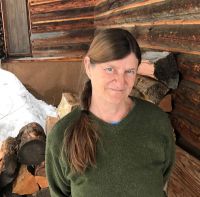
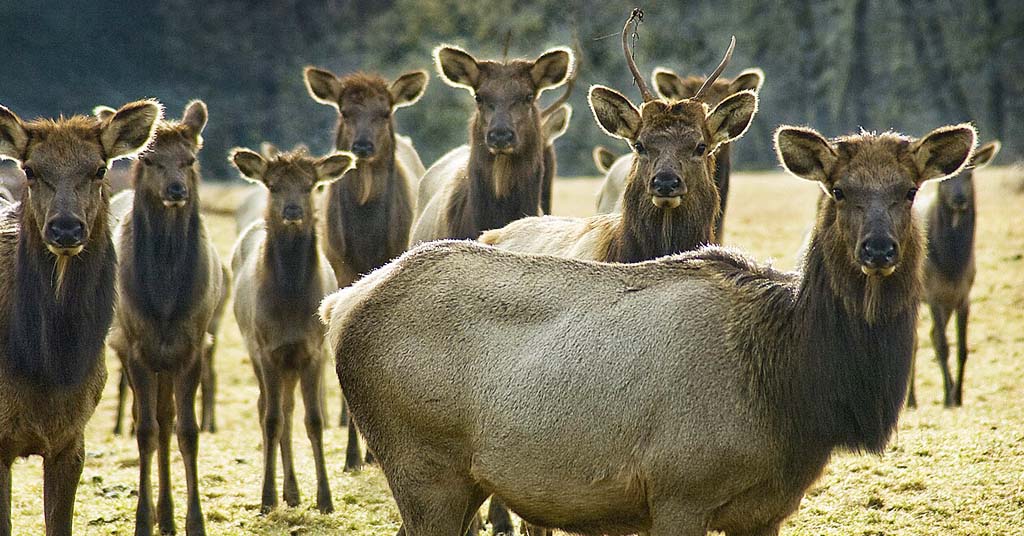
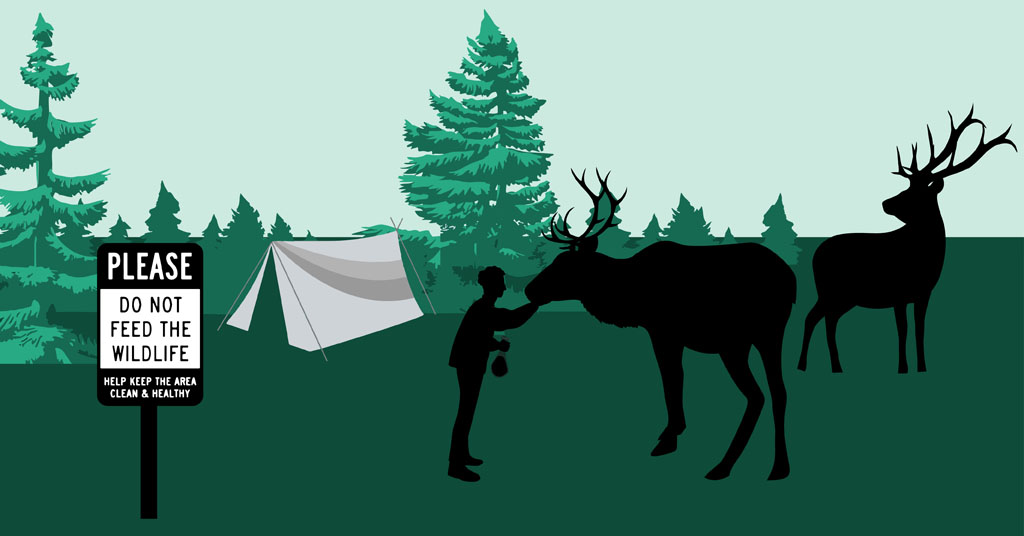
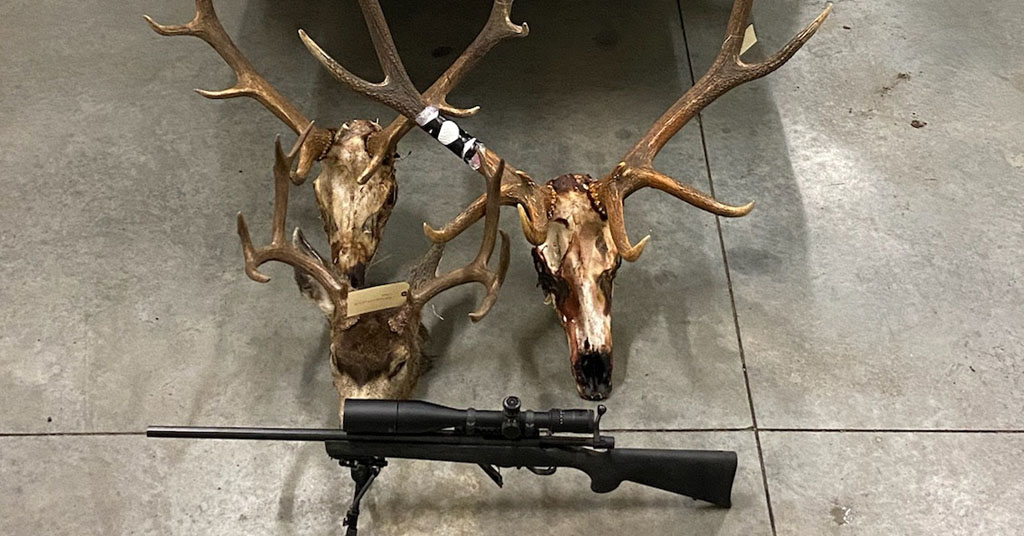
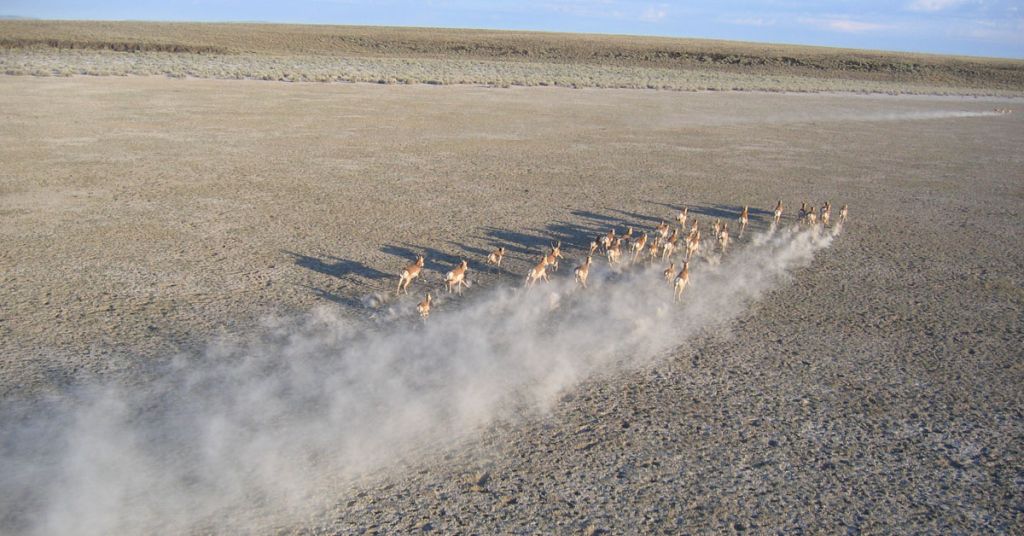



Only wolves can help with the CWD problem. Wolves will keep the elk healthy by their method of hunting, they chase elk herd to run, when the weak animal/sick slows and drops out of the herd they will kill it, true hunters. In early 1900s when wolves were driven to extinction, entire Elk population dropped to 41,000 in entire N. America (US). There were 10,000,000 elk in N America before the Europeans arrived.
I agree with Ayako. WA and OR allow far too much killing of cougars and wolves who are Nature’s frontline control on spread of ungulate diseases. NE WA in particular has way too much cougar killing. Protect livestock using proven non-lethal methods from these large carnivores, and leave the carnivores on the land to detect and kill sick deer and elk– they do this much better than people. The prion load in consumed deer meat is greatly reduced by the guts of these carnivores, especially for cougars, and this is the only means of reducing prions in the environment. Testing carnivore scat for prions is another relatively cheap way of detecting geographic spreading of CWD. Are game managers doing this in OR or WA? Didn’t two hunters in Colorado die from eating CWD-infected venison? This is a serious matter.